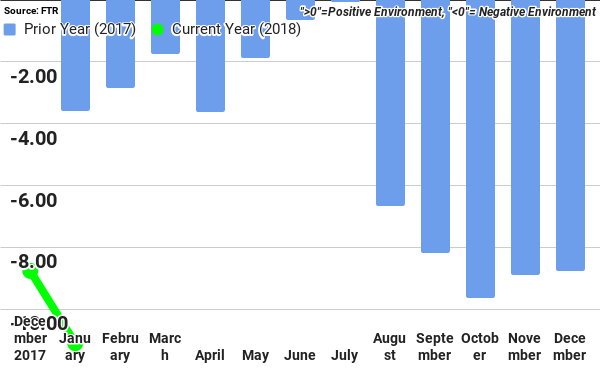FTR is forecasting a tough year for shippers on capacity and rates, and their January Shippers Conditions Index at -11.1 reflects the challenges they are facing entering into the new year.
Rate growth year-over-year is expected to accelerate in the second quarter before easing slightly in the second half of 2018. Full ELD compliance and a continuing driver shortage offer no real optimism for shippers. They will need to address freight transportation productivity, and their role in improving it, to counter the inevitable rising transportation costs associated with the current environment.
Jonathan Starks, Chief Operating Officer at FTR, commented, “The relationship between carriers and shippers tends to swing on a pendulum – with freight demand high and capacity tight, carriers are benefiting. Numerous companies are announcing that domestic freight costs are at record levels. Since carriers currently hold such a strong position, shippers need to be hyper-focused on their relationships with carriers.”
Avery Vise, Vice President of Trucking Research, added, “We are beginning to see the implementation, by both shippers and carriers, of the productivity enhancements that we have been expecting to happen. The elevated rate environment is not expected to be a short-lived event and continued progress will be necessary. There seems to be no single solution, and we are seeing many different routes to addressing the tight capacity environment, from changing driver requirements to increased driving school enrolment to increasing detention payments.”
Todd Tranausky, Senior Research Analyst at FTR, commented, “Shippers should be flocking to rail carload and intermodal solutions, given the tight trucking market. But so far, the data has not shown that to be true.
Intermodal volumes are growing but are limited by constraints of equipment and service levels. Carload volumes, however, are still below 2017 levels through the first 11 weeks of the year. This unwillingness to convert traffic only exacerbates the truck capacity situation.”


